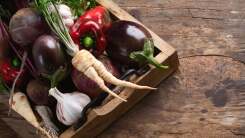In a world where appearances often dictate our choices, the concept of ‘ugly’ produce boxes has emerged as an intriguing alternative to traditional grocery shopping. These containers, filled with fruits and vegetables that may not meet society’s aesthetic standards, promise cost savings and reduced food waste. However, delving deeper into this phenomenon reveals a more complex reality.
The Illusion of Savings
While proponents argue that purchasing ‘ugly’ produce can save consumers money, it is essential to question whether these claims hold true in practice. The pricing structure for such items varies significantly across different retailers and regions. Additionally, the overall quality and shelf life of these products must be considered when evaluating their value proposition.
A Matter of Perception
The notion of what constitutes beauty in produce is subjective at best. By embracing unconventional shapes or sizes, ‘ugly’ produce challenges societal norms while promoting inclusivity within the food industry. This shift in perspective encourages consumers to appreciate the inherent worthiness of all fruits and vegetables rather than dismissing them based on superficial criteria.
An Environmental Imperative
Beyond financial considerations lies the crucial issue of reducing food waste—an urgent global concern. Embracing imperfect-looking produce helps combat this problem by diverting perfectly edible items from landfills. By supporting initiatives that prioritize sustainability over appearance-driven consumerism, individuals can contribute to a healthier planet for future generations.
Concluding Thoughts
In conclusion, while ‘ugly’ produce boxes offer an innovative approach to grocery shopping by challenging societal beauty standards and combating food waste concerns, their actual cost-effectiveness remains debatable due to varying pricing structures and product quality considerations. Nevertheless, shifting our perception towards valuing the inherent worth of all produce, regardless of appearance, is a step towards a more sustainable and inclusive food system.


